Korean cucumber salad, known for its crisp freshness and delightful fusion of flavours, is a culinary gem that has captured the hearts and palates of food enthusiasts worldwide.
This simple yet sensational dish embodies the essence of Korean cuisine, offering a balance of sweet, spicy, and tangy notes that dance on your taste buds with every bite.
This article delves into the vibrant world of Korean cucumber salad, exploring its history, ingredients, and the art of crafting this delectable side dish that has become a beloved staple in Korean dining. So, prepare to embark on a culinary journey celebrating the exquisite simplicity of Korean cucumber salad.
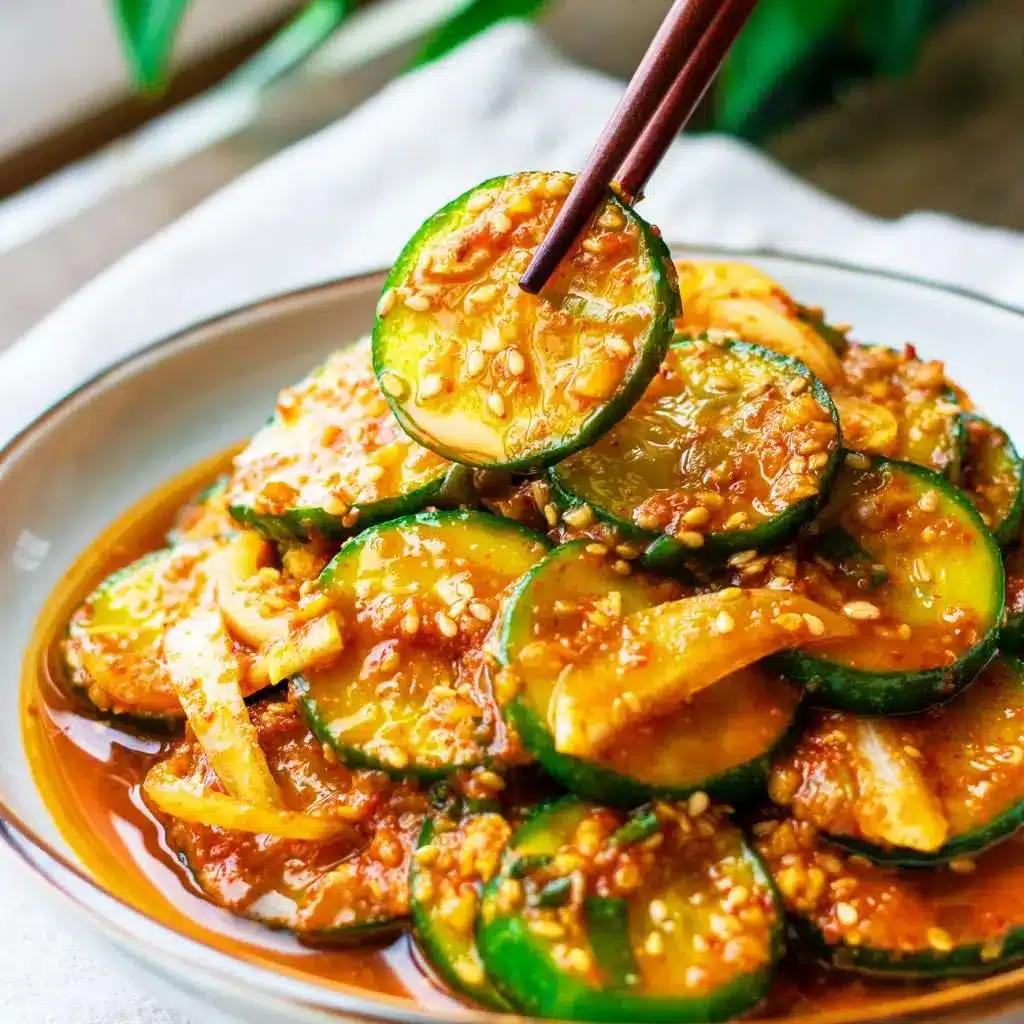
SEE ALSO:
How to Make Korean Cucumber Salad?
Ingredients
- 1 English cucumber (or 2 to 3 Kirby cucumbers), washed
- ¼ cup thinly sliced onion
- 1 green onion, chopped
- 2 garlic cloves, minced
- 2 tablespoons soy sauce
- 2 teaspoons Korean hot pepper flakes (gochugaru)
- 2 teaspoons sesame oil
- 2 teaspoons toasted sesame seeds
- 1 teaspoon sugar (optional)
Instructions
- Place sliced cucumbers in a large bowl and sprinkle evenly with salt; allow liquid to drain from cucumbers for about 15 minutes.
- Spoon cucumbers onto sheets of paper towels; wrap paper towels around cucumbers and wring out as much liquid as possible.
- Place green onion and garlic in a salad bowl; add rice vinegar, sesame oil, soy sauce, sesame oil, toasted sesame seeds, Korean red pepper flakes, and ground black pepper. Add cucumbers and toss to coat.
- Cover the bowl with plastic wrap and refrigerate until flavours blend, at least 30 minutes.
- Serve our Korean cucumber salad is ready to enjoy as a side dish with grilled meats, Korean BBQ, or as part of a larger Korean meal. It’s also delicious on its own or as a topping for bibimbap.
SEE ALSO: White Truffle Strain: All You Need to Know
Korean Cucumber Salad Recipe Variations
Here are some recipe variations for Korean cucumber salad, each with a unique twist:
1. Cucumber Kimchi Salad:
Ingredients:
- 2-3 small Korean cucumbers or 1-2 English cucumbers (about 2 cups thinly sliced)
- 1 tablespoon Korean red pepper flakes (gochugaru)
- 2 cloves garlic, minced
- 1 tablespoon fish sauce (for a non-vegetarian version)
- 1 tablespoon soy sauce or tamari (for a vegetarian version)
- 1 tablespoon sugar
- 1 tablespoon sesame oil
- 1 teaspoon rice vinegar
- 2 green onions, thinly sliced
- 1 tablespoon toasted sesame seeds
- A handful of fresh cilantro leaves (optional)
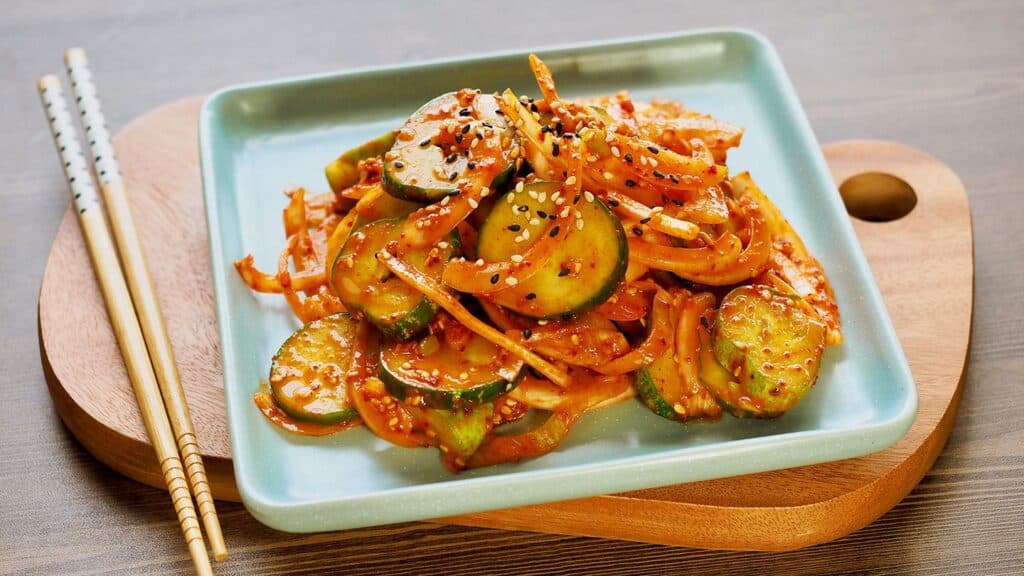
Instructions:
- Follow the same steps as the basic recipe until you prepare the cucumbers.
- Mix the red pepper flakes, minced garlic, fish sauce (or soy sauce for a vegetarian version), sugar, sesame oil, and rice vinegar in a separate bowl.
- Combine the sliced cucumbers, green onions, and the dressing mixture. Toss everything together.
- Let it marinate for at least 30 minutes to allow the flavours to meld. Garnish with toasted sesame seeds and fresh cilantro leaves before serving.
2. Cucumber and Radish Salad:
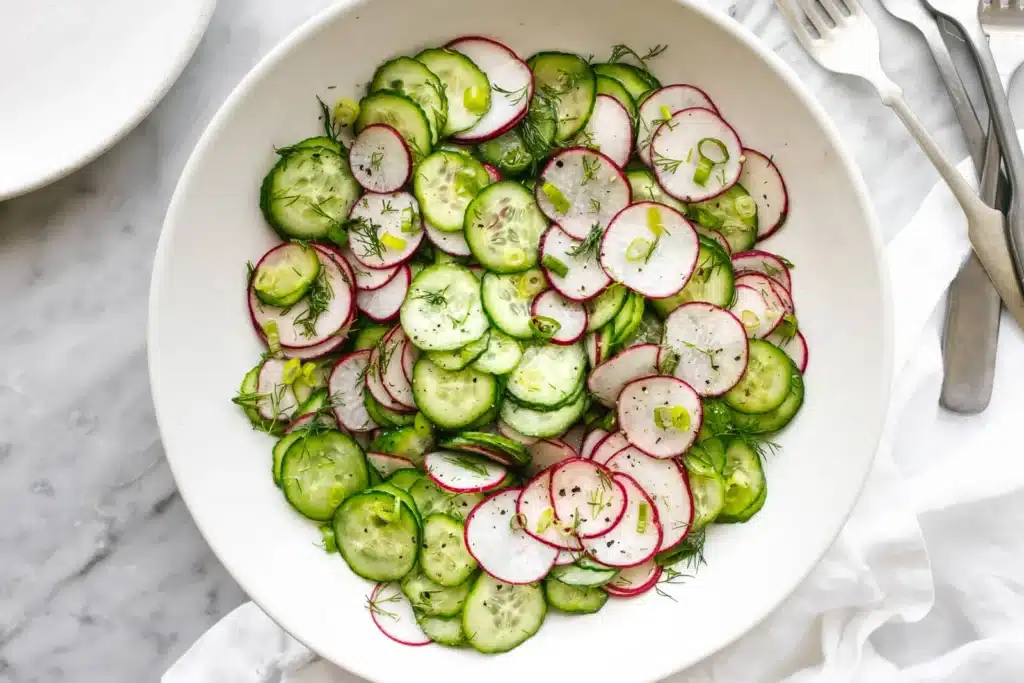
Ingredients:
- 2-3 small Korean cucumbers or 1-2 English cucumbers (about 2 cups thinly sliced)
- 1 cup thinly sliced Korean radish (mu) or daikon radish
- ¼ cup soy sauce
- 2 tablespoons rice vinegar
- 1 tablespoon sugar
- 1 clove garlic, minced
- 1 teaspoon sesame oil
- 1 teaspoon toasted sesame seeds
- 1-2 green onions, thinly sliced
Instructions:
- Slice the cucumbers and radish into thin strips or matchsticks.
- Whisk together the soy sauce, rice vinegar, sugar, minced garlic, sesame oil, and toasted sesame seeds in a bowl.
- Combine the sliced cucumbers and radish with the dressing mixture. Toss well to coat.
- Let it sit in the fridge for about 20-30 minutes to allow the flavours to meld. Garnish with sliced green onions before serving.
3. Spicy Cucumber Salad with Gojuchang:
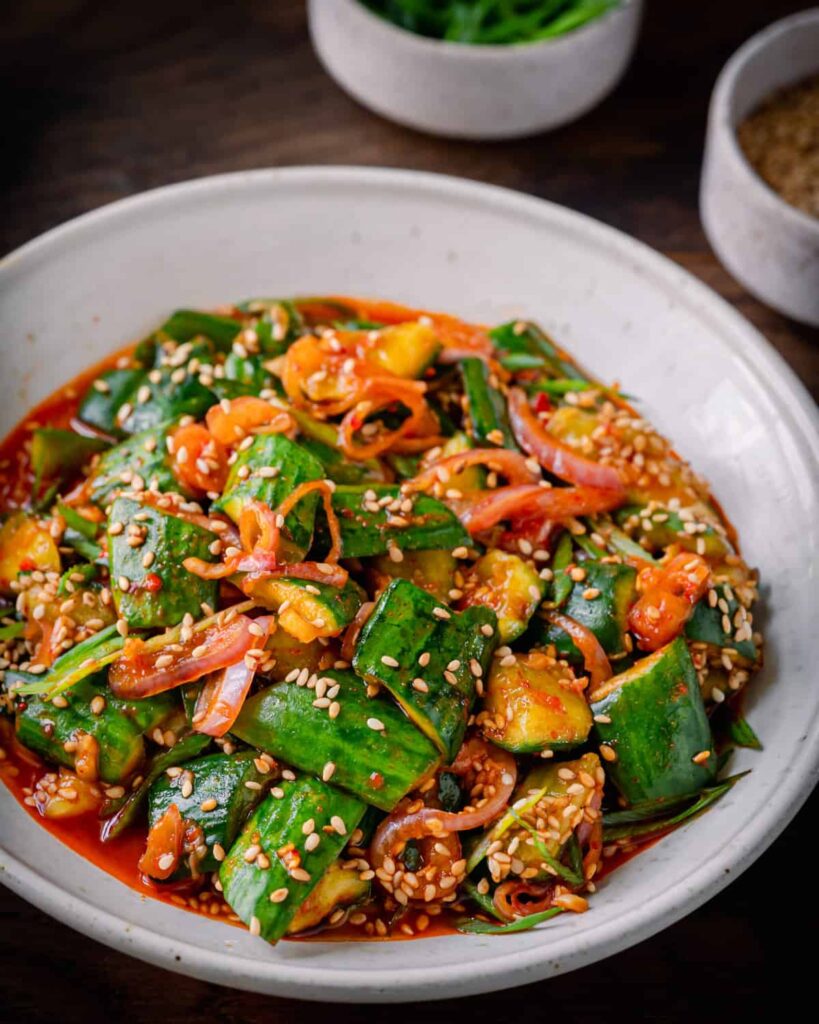
Ingredients:
- 2-3 small Korean cucumbers or 1-2 English cucumbers (about 2 cups thinly sliced)
- 2 tablespoons gochujang (Korean red pepper paste)
- 1 tablespoon soy sauce or tamari
- 1 tablespoon rice vinegar
- 1 tablespoon sugar
- 1 teaspoon toasted sesame oil
- 1 clove garlic, minced
- 1 teaspoon toasted sesame seeds
- Sliced green onions and shredded carrot for garnish (optional)
Instructions:
- Prepare the cucumbers as in the basic recipe.
- Combine gochujang, soy sauce, rice vinegar, sugar, sesame oil, and minced garlic to create a spicy dressing in a bowl.
- Toss the sliced cucumbers in the dressing mixture until well coated.
- Allow it to chill in the refrigerator for about 20-30 minutes to let the flavours meld. Garnish with sliced green onions and shredded carrot for added colour and flavour before serving.
READ ALSO: Kid Cuisine: Healthy Recipes for Your Kids
What to Serve with Korean Cucumber Salad
Korean cucumber salad, or “Oi Muchim,” pairs well with a variety of Korean dishes and other international cuisines. Here are some detailed suggestions on what to serve with Korean cucumber salad:
1. Korean BBQ (Samgyeopsal):
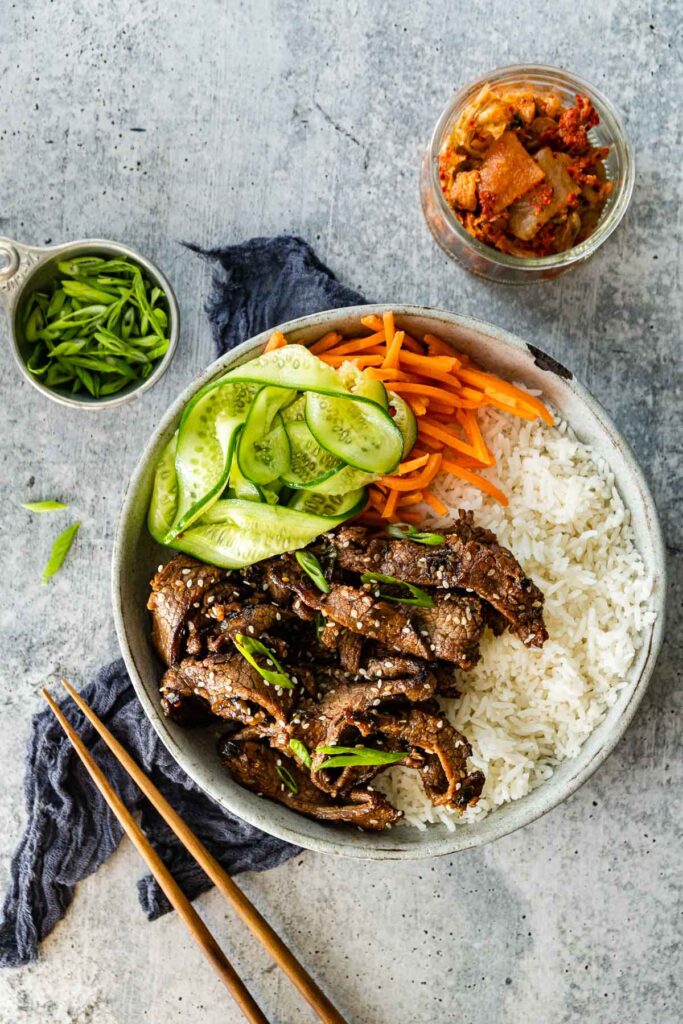
Korean BBQ is a classic pairing for cucumber salad. The refreshing and slightly spicy salad complements the rich and savoury flavours of grilled meats like pork belly (samgyeopsal) and beef (bulgogi). Serve the cucumber salad as a side dish, and wrap pieces of grilled meat in lettuce leaves along with a scoop of the salad for a delightful bite.
2. Bibimbap:
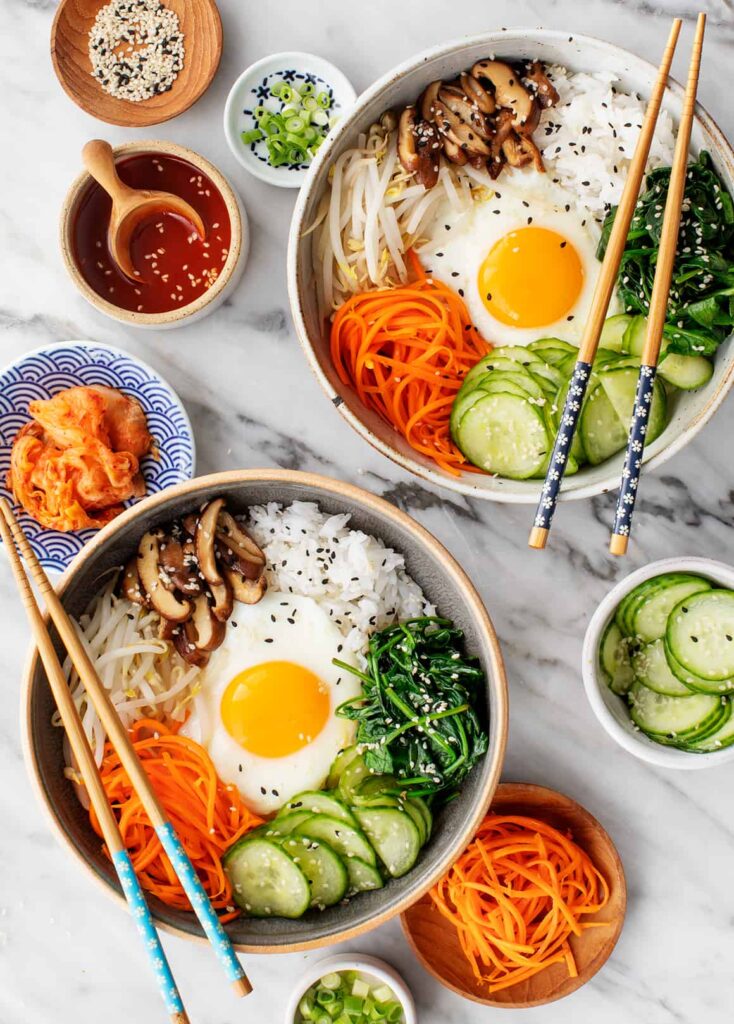
Bibimbap is a Korean rice dish topped with various vegetables, meat (optional), and a spicy gochujang sauce. The cucumber salad adds a cooling contrast to the spicy components of the dish. Serve it on the side or mix it right into your bibimbap.
3. Kimbap (Korean Rice Rolls):
Kimbap is a Korean snack or meal consisting of seaweed-wrapped rice rolls filled with various ingredients like vegetables, eggs, and meat. Cucumber salad makes a great side dish to balance the flavours and textures.
4. Tofu Dishes:
The mild and refreshing nature of cucumber salad pairs well with tofu dishes, such as tofu stir-fry, tofu and vegetable soups, or tofu bibimbap.
5. Korean Pancakes (Jeon):
Korean pancakes (jeon) made with ingredients like zucchini, scallions, or seafood go excellently with cucumber salad. The crispy and savoury pancakes contrast beautifully with the salad’s freshness.
6. Ramen or Korean Noodles:
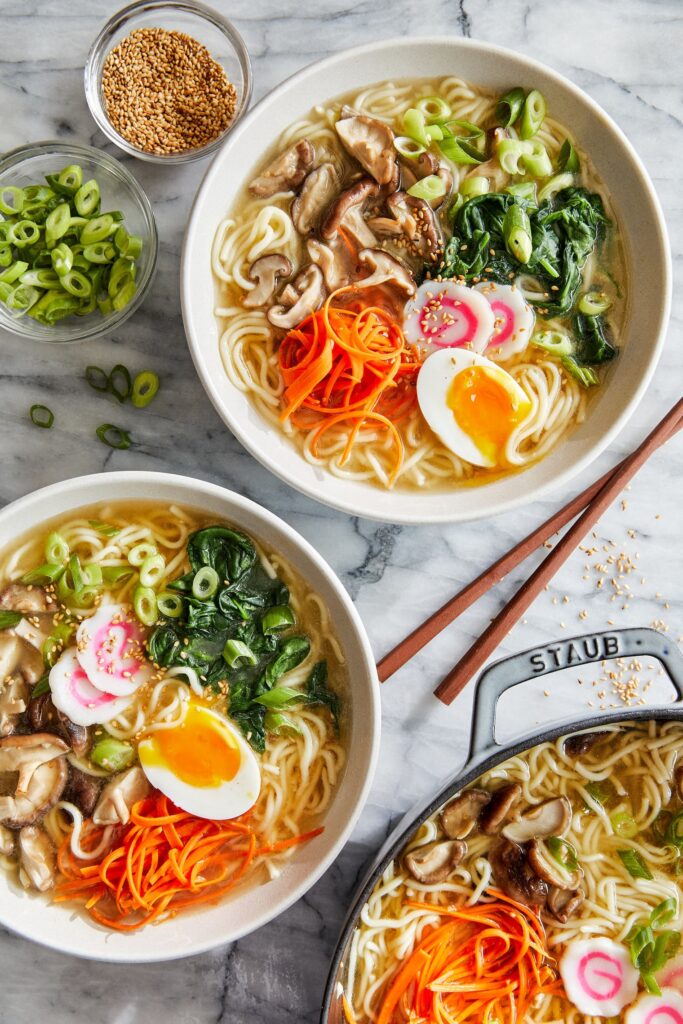
Enjoy cucumber salad as a side dish with Korean noodles like Japchae (sweet potato glass noodles) or a bowl of ramen for a refreshing crunch and balance.
7. Fried Chicken:
Whether you’re enjoying Korean-style fried chicken or any other fried chicken variation, Korean cucumber salad is a great accompaniment. It provides a cooling element to balance the heat and crispiness of the chicken.
8. Sushi or Sashimi:
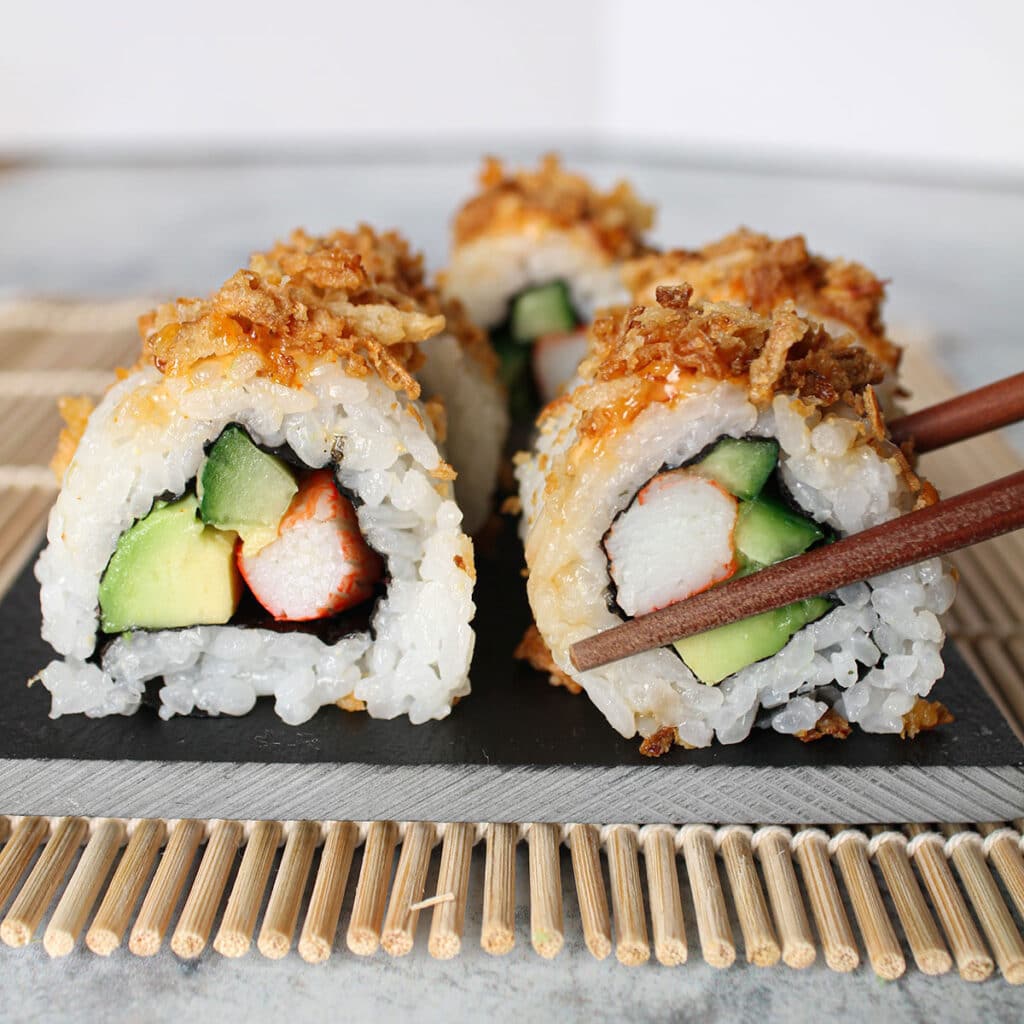
While Korean cucumber salad is not a traditional pairing for Japanese cuisine, its flavours and textures can complement sushi or sashimi dishes, especially on a fusion sushi roll with Korean influences.
9. Grilled Seafood:
Serve cucumber salad with grilled or pan-seared seafood like shrimp, squid, or fish. The salad’s light and zesty flavours provide a refreshing contrast to the richness of the seafood.
10. Mediterranean or Middle Eastern Dishes
Korean cucumber salad can also work well with Mediterranean or Middle Eastern dishes. Serve it as a side with falafel, kebabs, hummus, or tabbouleh for a fusion of flavours and textures.
11. Rice and Simple Protein
Sometimes, a simple meal of steamed rice and a basic protein like grilled chicken, pork, or fish can be elevated with the addition of Korean cucumber salad. It adds a burst of flavour and freshness to the plate.
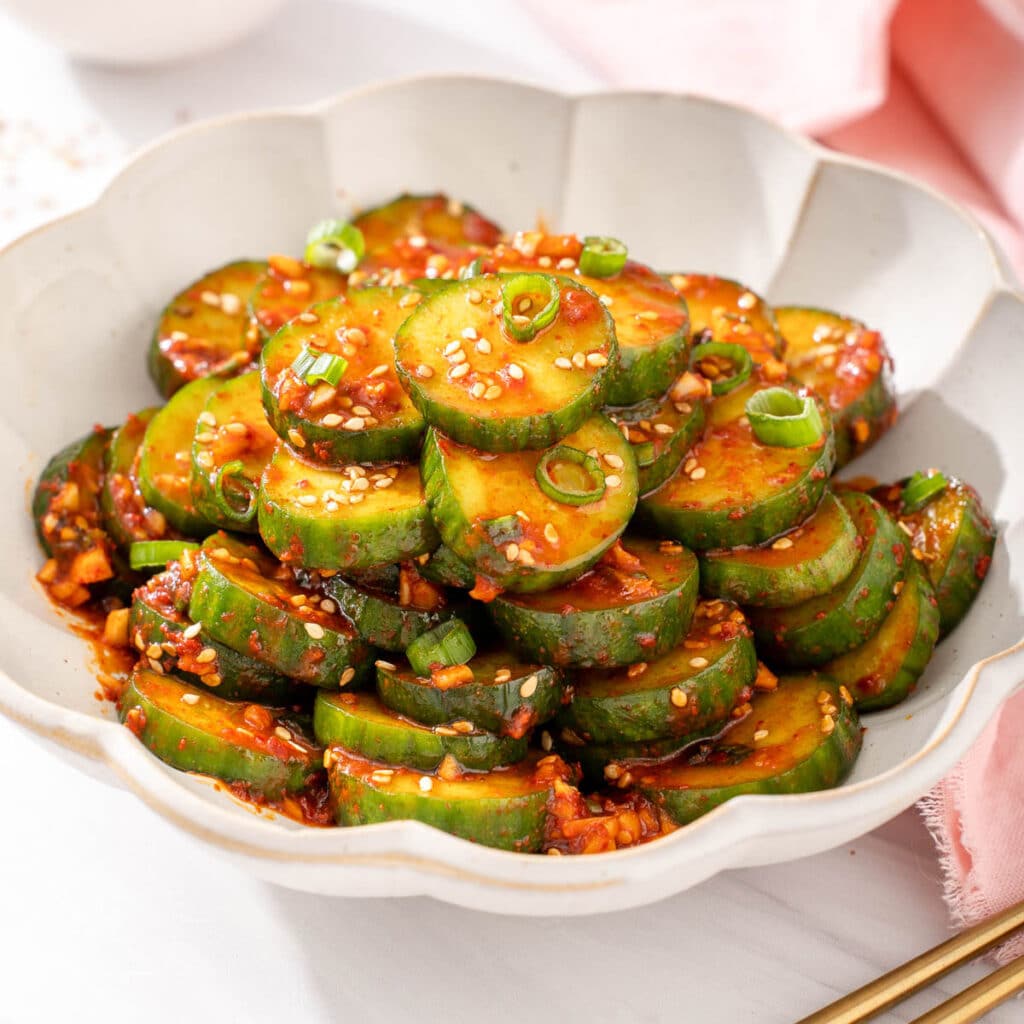
How to store Korean Cucumber Salad
Storing Korean cucumber salad properly is essential to maintain its freshness and flavour. Here’s how to store it:
- Refrigeration: Transfer the leftover cucumber salad to an airtight container with a tight-fitting lid. Ensure the container is clean and dry to prevent excess moisture from accumulating inside. Seal the container properly to prevent air from entering, as exposure to air can cause the salad to lose its freshness and crispness.
2. Keep it Cold: After preparing the salad, place the airtight container in the refrigerator as soon as possible. Cucumber salad is best when served chilled, and refrigeration helps maintain its crisp texture.
3. Consume Promptly: While cucumber salad can be stored for a day or two in the refrigerator, it’s at its best when consumed within 24 hours. Over time, the cucumbers may release more moisture, causing the salad to become slightly watery.
4. Prevent Sogginess: Drain off the excess liquid before serving if the salad has become too watery after refrigeration. Gently tilt the container and pour off any accumulated liquid. This can help restore the salad’s texture.
5. Stir Before Serving: Before serving any refrigerated leftover cucumber salad, give it a good stir to redistribute the dressing and seasonings evenly.
6. Garnish Fresh: If you have garnishes like toasted sesame seeds or additional herbs, consider adding them before serving. This maintains their freshness and crunch.
7. Avoid Freezing: Cucumber salad doesn’t freeze well. Freezing can cause the cucumbers to become mushy when thawed, compromising the texture and flavour. It’s best enjoyed fresh.
SEE ALSO: Beetroot Soup Recipe
FAQs
How are Korean cucumbers different?
Korean cucumbers are generally thinner and longer than other cucumber varieties and are typically used fresh to make pickles, side dishes, and salads. Korean cucumber, also known as oi (오이) in Korea, is an Asian cucumber variety developed in South Korea. The fruit’s size is longer and more slender than that of regular cucumbers, typically around 18 inches (45 cm) long and 2 inches (5 cm) wide. The skin is usually dark green, with small, spiky bumps.
What is the difference between Korean cucumbers and regular cucumbers?
Korean cucumbers are generally thinner and longer than other cucumber varieties and are typically used fresh to make pickles, side dishes, and salads.
Are cucumbers popular in Korea?
Fresh, cooked, or fermented vegetables are a major part of the Korean daily diet. Cucumbers are widely enjoyed raw and fermented in dishes such as oi muchim.
